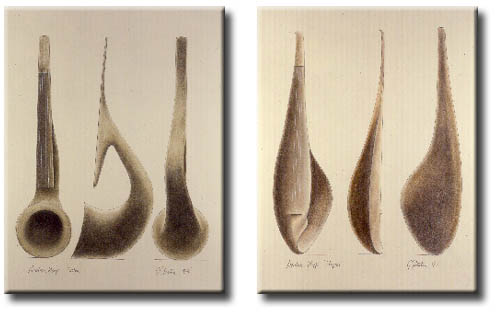|
Aeolian harps are mentioned in Homer’s legends, 800BC, and became popular in Europe in the late 1700s. The traditional Aeolian harps were generally
rectangular shaped boxes made of wood with animal-gut strings stretched over two bridges. In England they were usually wedged in casement windows to make use of the breeze entering the house.
Aeolian harps conjured up evocative feelings amongst poets, authors and composers. References in literature to aeolian harps can be found throughout the 18th, 19th and early 20th centuries.
Bloomfield, Coleridge, Keats, Wordsworth and Laurie Lee all wrote about them. Johannes Brahms and Ricardo Linter have composed ballads about them. In 1953 M. Abrams said these harps had become an analogy
for the poetic mind as well as a subject for poetic description.
In 1856 Kastner, from Alsace, observed "harps that maintain themselves in a decent state in the garden have long
been sought after."
Geoffrey Stinton’s harps fulfil this wish, being weather and UV resistant. His aeolian harp is an imaginative example of what can be achieved when a durable
material is ued to make an ancient musical instrument.
|


